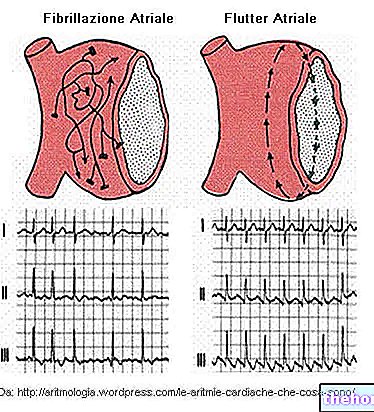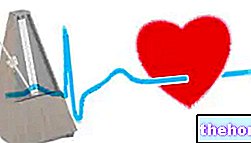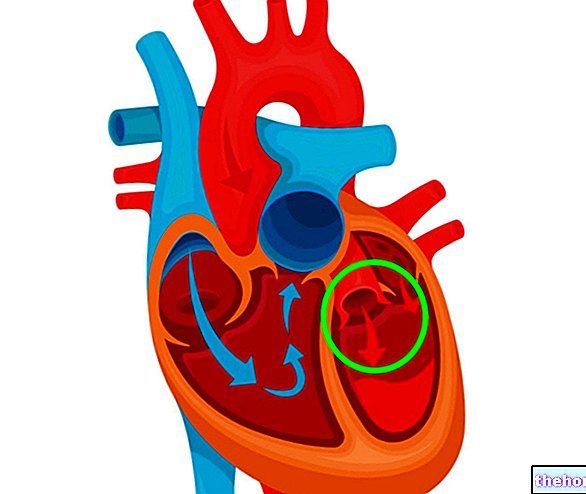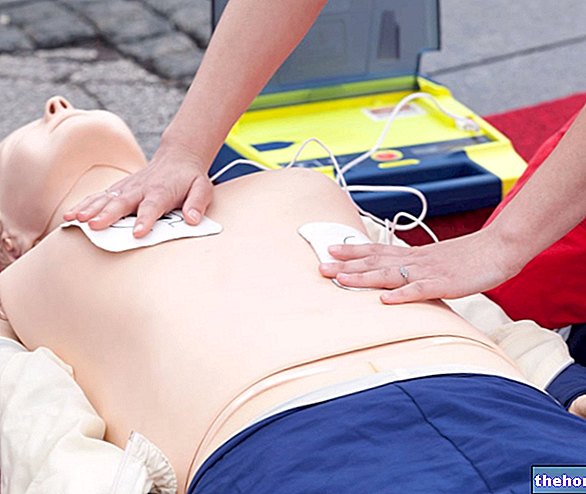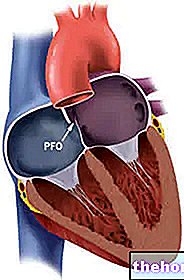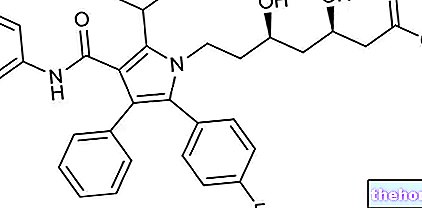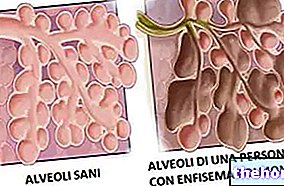Cardiac ablation is not always a first choice surgery; however, in some certain circumstances it becomes fundamental and represents an excellent solution to arrhythmic disorder.
Before the treatment, no special preparation is required, except for some clinical tests and some recommendations, such as, for example, having a complete fast for at least 6-8 hours.
The risks associated with the procedure are different and should not be neglected at all.
The achievable results are more than good, however, for the best benefits you need to adopt a healthy lifestyle.

The goal of cardiac ablation is to eliminate the cause of the arrhythmia; not surprisingly, ablation derives from a Latin verb (auferre), which means "take away".
WHAT ARE SINUS RHYTHM AND HEART ARRhythmias
Sinus rhythm is the normal heart rhythm. The term sinus derives from the fact that the normal heart rate is regulated by the so-called sino atrial node. Located at the level of the right atrium, the sinoatrial node is a center for the generation of electrical impulses, which contract the heart and mark the right heart rate.

Figure: surrounded by a red box, the generating centers of the electrical impulses. The sinoatrial node is the main one and the one on which the heart rhythm must depend; the atrial ventricular node, the atrial ventricular bundle (or bundle of His) and the Purkinje fibers, on the other hand, are the so-called secondary centers, which are directed by the main one, but which at the same time collaborate with it in a decisive way.
This generating center does not work alone, but in collaboration with other similar centers (secondary centers), which, however, must comply with its directives if they want to work at their best.
Cardiac arrhythmias are alterations in the sinus rhythm. Alterations are not all the same, but they can cause:
- A change in heart rate. The heartbeat can become faster or slower than the threshold considered normal (which is between 60 and 100 beats per minute).
- A variation of the center for generating electrical impulses. In other words, the sinoatrial node no longer directs the heart rhythm.
- Disturbances in the propagation of electrical impulses. Also called conduction disturbances, these abnormalities disrupt the normal sinus rhythm.

Figure: comparison between a heart, whose heart rhythm is normal, and a heart whose rhythm is altered and suffers from an "arrhythmia known as atrial fibrillation. Atrial fibrillation is one of those heart rhythm disorders, which can be treated with" cardiac ablation. From the site: healthtap.com
and clinical investigations.
THE PRE-OPERATIVE CLINICAL EXAMINATIONS
The various pre-operative clinical tests consist of an assessment of the state of heart health and an "analysis of the patient's recent and past clinical history. Their information is fundamental, as it is from them that any possible contraindications to cardiac ablation surgery.
In particular, as regards the clinical history, it is important for the doctor to know if the patient suffers or has suffered in the past from serious diseases (cardiac and other), if he is wearing a heart pacemaker or an implantable defibrillator or if you take medications of any kind.
PRE-OPERATIVE MEASURES
In order for everything to go smoothly, the patient must comply with the following precautions before cardiac ablation:
- Present yourself, on the day of the surgery, completely fasted for at least 6-8 hours.
- Stop any drug treatment aimed at treating heart rhythm disturbances (antiarrhythmic therapy). Otherwise, in fact, there is the danger of not obtaining the desired benefits.
- Ask a relative or a friend for availability to return home, as, once the intervention is completed, it is possible to feel dizzy and be confused and unable to drive a means of transport.
Any other precautionary measures, taken in addition to the three mentioned above, depend on the doctor and patient in question.
In-depth study: comparison between cardiac ablation and cardioversion
Cardiac ablation and cardioversion are two procedures with quite similar purposes.
In both cases, in fact, the aim is to restore the normal heart rhythm, altered by an "arrhythmia.
So where do the differences lie?
Cardioversion, in its electrical version, uses an instrument that emits electrical discharges, called a defibrillator. These discharges, once transmitted, could cause episodes of thrombosis or embolism, as the heart of patients with arrhythmia often has blood clots inside it. Therefore, to avoid this possible complication, the patient begins, at least four weeks before the operation, a therapy based on anticoagulant drugs, which thin the blood and dissolve any blood clot present. Only after taking this precaution, it is possible to undergo the procedure. cardioversion.
and has, at one end, electrodes and an energy source, called a scaler.
The contrast fluid works as a tracer, because it allows the cardiologist to follow the path of the catheter on a monitor and know when it has reached the heart. The contrast fluid may cause kidney damage (rare) and a mildly uncomfortable sensation when it is "loaded" into the catheter (common).
The electrodes (usually three in number) are used to record the electrical activity of the heart, in order to identify which area of the organ is not functioning properly. In other words, through the electrodes, all the cardiac muscle tissue (the myocardium) is analyzed piece by piece, looking for the aberrant area, which gives rise to the arrhythmia.

Figure: An example of a cardiac ablation catheter. From: medgadget.com
The scaler, on the other hand, is, in fact, the instrument with which this aberrant tissue is destroyed, thus eliminating the cause of the heart problem. This device can be of different types: radiofrequency (radiofrequency cardiac ablation), laser (ablation with laser) or at low temperature (cardiac cryoablation).
THE REAL PROCEDURE
The cardiologist introduces the catheter, through the needle-cannula (femoral or jugular, it is the same for the procedure), and directs it to the heart, using the contrast fluid and the connected monitor.
Once he reaches the heart, he activates the electrodes and begins probing all the heart tissue. The recording of the electrical activity allows, as mentioned, to identify the area that causes the arrhythmia. Once the aberrant area has been traced, he activates the scaler, which destroys the pathological tissue. With the elimination of the small portion of myocardium that gave rise to the arrhythmia, the heart rhythm is regularized and the electrical impulses coming from the sinoatrial node are allowed to return to normal travel.
During the entire procedure, anticoagulant drugs may be injected into the patient to prevent blood clots from forming inside the heart cavities.
In-depth study: how is the area of myocardium, which causes the arrhythmia, identified?
Some arrhythmias, such as atrial tachycardia or atrial fibrillation, alternate between times when they cause symptoms and times when they are asymptomatic. It follows that tracing the area of the heart responsible for the arrhythmic disorder is not always a "simple and immediate" operation.
To solve this problem, an external pacemaker is used during cardiac ablation or, alternatively, some particular drugs such as atropine, which tend to favor the onset of arrhythmia, latent at that particular moment of treatment. In other words , the cardiologist voluntarily induces the appearance of the alteration of the rhythm, in order to better identify its origin.
DURATION OF THE PROCEDURE
Cardiac ablation typically takes 2 to 4 hours; however, if complications arise, it can last even longer.

Figure: entry sites for the catheter and needle cannula. In the figure, the possibility of inserting the catheter through the jugular vein is not indicated. From the site: india.columbiaasia.com
FEELINGS DURING THE INTERVENTION
The patient may experience discomfort or pain:
- When the two cannula needles are inserted, one for sedatives and one for the catheter.
- When contrast fluid is "loaded" into the catheter.
- When the energy source that destroys aberrant heart tissue is put into operation.
These are very brief sensations and, usually, of mild entity; however, in some cases, especially among individuals most sensitive to pain, they can also be quite acute.
SPECIAL CASES
Some cardiac ablation surgeries are performed with an open heart. On these occasions, general anesthesia is required for obvious reasons, which renders the patient completely unconscious.
, in order to intervene promptly if post-operative complications appear.During this time, you are likely to feel dizzy and confused: these are normal sensations, caused by sedative drugs and anesthetics.
RESIGNATION
If everything goes smoothly and if the treating cardiologist believes that the operation was successful, the patient can go home even on the day of cardiac ablation.
If, on the other hand, complications appear or the cardiac situation is unstable, the patient should spend the night in the hospital.
As recommended before the operation, for the return home it is necessary to seek help from a relative or a friend.
HOW DOES IT FEEL?
After the cardiac ablation procedure, it is normal to feel confused and sore.
The state of confusion is due to the sedative and anesthetic drugs, taken during the operation, and lasts a few hours.
The painful sensation, on the other hand, is caused by the invasiveness of the intervention and generally lasts for a little less than a week.
THE RETURN TO NORMAL ACTIVITIES
Barring complications, the return to everyday activities, such as work, occurs within a few days. The advice, usually, is to wait for the cessation of the sense of general pain, which characterizes the post-operative phase.
The chance of experiencing any of these complications increases dramatically if you have diabetes or some kidney disease. This is one of the reasons why, before subjecting an individual to cardiac ablation, it is necessary to undergo all the appropriate clinical checks.
by seasoning foods or by doing more physical activity (for all the advice, see the following table), heart health is improved, consequently also the impact that a therapy, such as cardiac ablation, has on it.Table: the tips to follow, to improve general health and heart.
- Reduce the amounts of caffeine taken daily
- Season foods with less salt to keep blood pressure at normal levels
- Exercise
- Not smoking
- Avoid drinking alcohol
- Eat healthy foods
- Maintain the right body weight
- Control the strongest emotions

